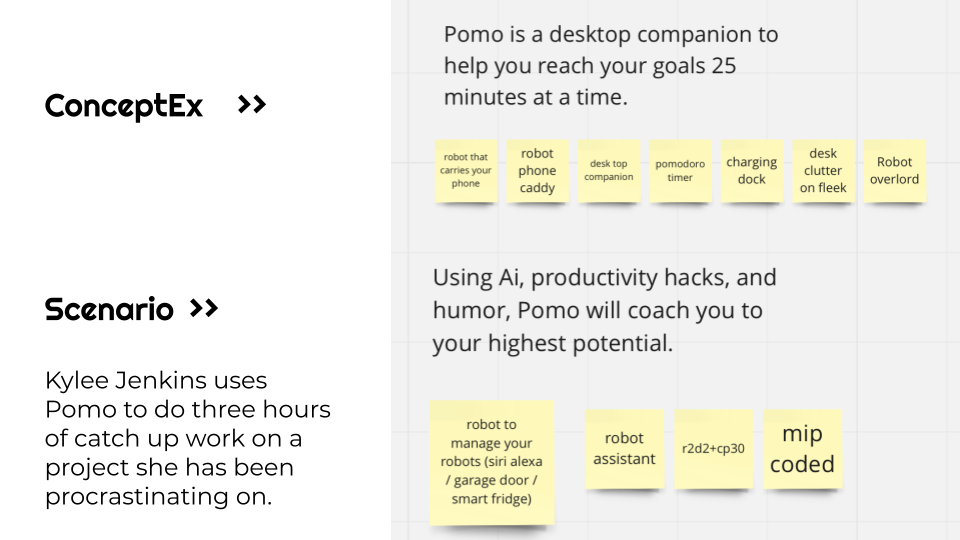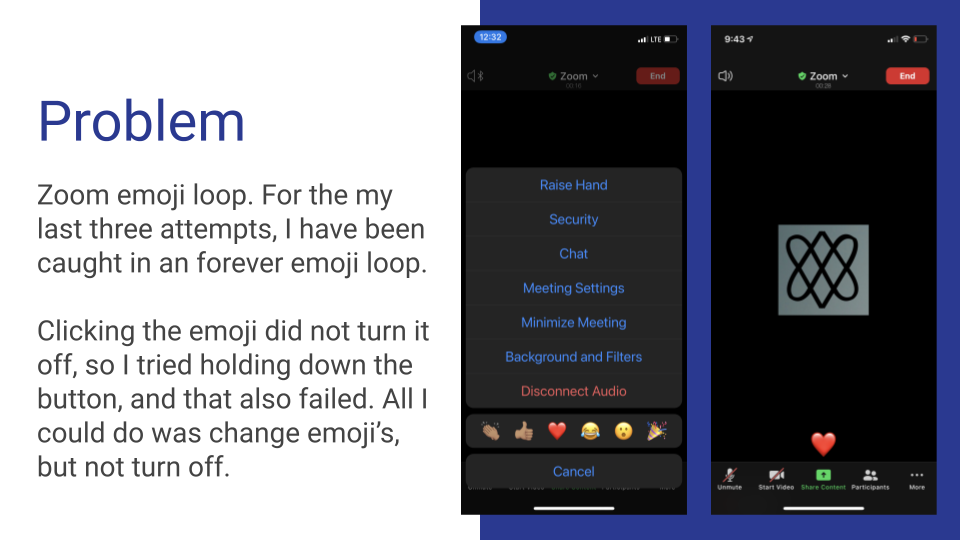Three Quotes from MicroInteractions by Dan Saffer
“A micro-interaction is a contained product moment that revolves around a single use case—a tiny piece of functionality that only does one thing.”
Recently I was in class during a workshop with Di Xu teaching us about Airtable. She asked us to react with the checkmark emoji when we were done with a task to signal we were ready to share our work. Someone had their checkmark still checked and they were called on. The person wasn’t truly signaling that they wanted to share, but because Zoom leaves the emoji in a forever loop, Di thought they were. I volunteered to share but when I when to the button “Share Content” a menu popped up with a list of options that did not include “Share Screen”. I was stunned and wondered if the settings were off, or if Zoom removed the feature, or I was in a waking nightmare. It has been a couple of months since I had used Zoom and they must have made some changes since we’ve been on break. One button to “Share Content” creates a product moment that only does one thing, but with the option to do it in a variety of ways. Later on in the class, I also found that when I tried to remove an emoji, it was impossible. Double-clicking the emoji to remove it worked exactly one time, but never again. “Ok, cool. You just double-click to remove the emoji” were the last positive words I said about Zoom. I opened the app again tonight to do the microinteractions example and found that I was still stuck in an emoji loop. I could change emoji’s but never leave, similar to the Hotel California, which must be a song about conceptual Hell. This is the case of one product moment that only does one thing, turning on or off an emoji.
“If the microinteractions are poor, the main features, no matter how nicely done, are surrounded by pain and frustration. The design of your product is only as good as its smallest part.”
Yesterday during product class our professor could not find the button in Zoom to record the session. He may have been in the wrong profile, or it may have been disabled, or it may have been all a dream. He never found the record button and eventually gave up. I was pretty disappointed because detailed lectures sometimes need to be referenced later. I made a comment not to worry because “Zoom is a terrible app and everybody hates it.” It can’t be that bad, but suddenly it was. In the frustration of the moment, Zoom went from hero to zero because the simplest microinteractions like turning on or off an emoji or starting a recording could not be experienced successfully. It’s like when you see the feedback that you have a 90.3% in the Canvas app, but end up with a C on your transcripts, or when your gas tank says you have a full tank and five minutes later you are on the side of the road hitchhiking to work. The reason these examples are so appalling is that users put their trust into these apps, and these microinteractions are the backbone of the experience. When the trust of the microinteraction is broken, credibility and confidence decline.
“In Gypsy, the user could select a piece of text, press the “Copy” function key, then select the destination, and finally press the “Paste” function key. No mode required. And thus, cut and paste was born.”
This is a simple solution to a previously complicated microinteraction. By removing the need to go into a special mode in order to edit text, the user can experience a smooth and seamless experience. In the old days, microinteractions were far more complicated to initiate, involving many more steps, contingencies, and fail points. As microinteractions evolve, they tend to disappear into the void of muscle memory and intuition. Apple doesn’t have to explain how to answer an iPhone. If a call is incoming whether it be Facetime or phone call, two enlarged round buttons colored red or green with a rotary phone that is raised or lowered tell a user they have options how to handle the call to adventure, or the refusal of the call. It doesn’t matter that soon most of the population will have never seen a rotary phone, Apple still uses it as an icon to initiate the trigger. Even babies (probably) intuitively understand how to answer or refuse the phone call by clicking the green button or red button.





















































































































































